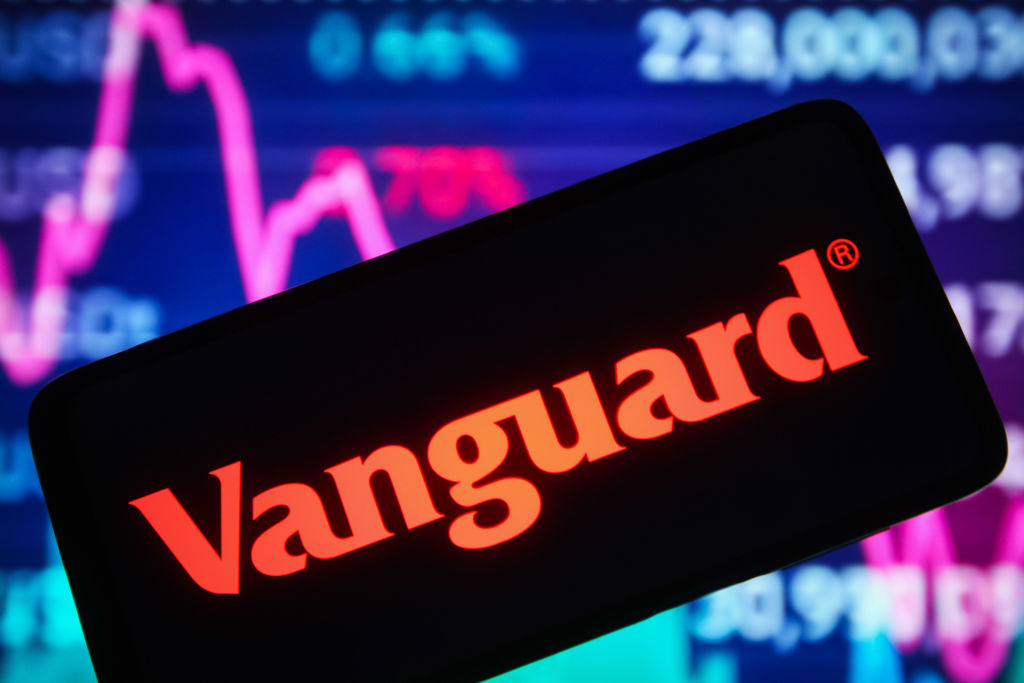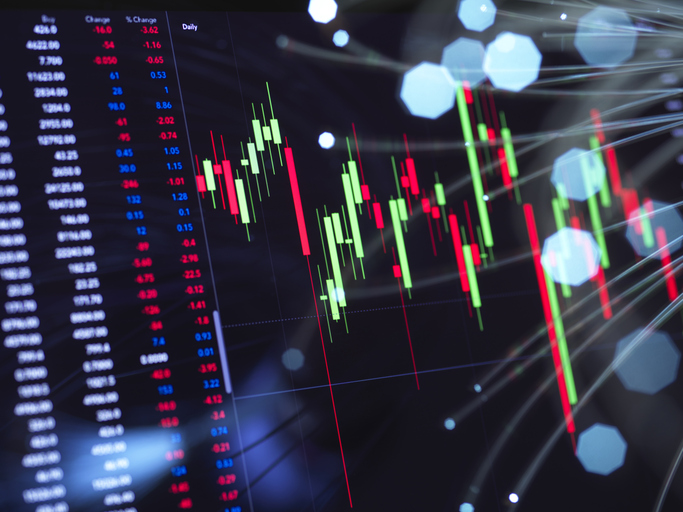4 Highly Rated Vanguard Dividend and Income Funds
These four low-cost Vanguard dividend and income funds have all earned high praise from Morningstar, and they offer attractive yields.


Whenever we write about Vanguard funds, the conversation always quickly shifts to fees.
Vanguard has long been a pioneer in low-cost investing, and to this day, one of the biggest selling points of its investment funds is its bargain-basement expense ratios.
But today, rather than talk about how much we'll pay Vanguard, let's discuss how much Vanguard can pay us.
Investors who want to build up the income portion of their portfolio often do so via funds.
As my colleague Kent Thune puts it, "If dependable income is a priority, you probably also value stability – and a diversified bundle of holdings will provide much more of that than a few individual stocks."
With this in mind, we're going to delve into four Vanguard dividend and income funds that fit the bill, boasting low fees, above-average yield and high ratings.
Specifically, all four of these funds have earned Gold Medalist ratings – a forward-looking tiered system that Morningstar uses to express its confidence in whether a fund is able to beat its category index.
The minimum initial investment for each of these funds is $3,000. We'll also include the corresponding Vanguard ETF.
Data is as of October 17. Yields on equity funds represent the trailing 12-month yield. Yields on bond funds are SEC yields, which reflect the interest earned after deducting fund expenses for the most recent 30-day period.

Vanguard High Dividend Yield Index Fund Admiral Shares
- Fund category: Large value
- Assets under management: $81.3 billion
- Yield: 2.5%
- Expense ratio: 0.08%, or $8 annually for every $10,000 invested
We'll get the most obvious cash cow out of the way first.
The Vanguard High Dividend Yield Index Fund Admiral Shares (VHYAX) is built for big, beefy yields. In fact, at the moment, it's the highest-paying Gold-rated equity income fund in Vanguard's arsenal.
VHYAX tracks the FTSE High Dividend Yield Index, which includes companies with a history of paying above-average dividends.
The index is built by ranking the stocks in the FTSE USA Index by their expected 12-month dividend yield and selecting the highest-yielding 50% of the eligible stocks.
It then weights those stocks by float-adjusted market capitalization (bigger companies represent greater shares of the fund's assets).
"Market-cap-weighting also emphasizes larger, more-stable firms that should have the capacity to continue making dividend payments," says Morningstar Director Bryan Armour. "This mitigates the impact of value traps because their weight drops as their prices fall.
"Leaning toward stable companies comes at the cost of maximizing dividend yield," he adds. "But the fund's yield still typically surpasses the Russell 1000 Value Index by about 1 percentage point."
VHYAX currently holds nearly 570 stocks, with double-digit allocations to financials, technology, health care, industrials and consumer staples – in other words, some of the sectors you'd expect, but some you wouldn't.
It's a haven for blue-chip dividend stocks such as Procter & Gamble (PG), Home Depot (HD) and Walmart (WMT). At the same time, its top holding is chipmaker Broadcom (AVGO).
Curiously, missing entirely from the fund is an allocation to real estate investment trusts (REITs); these well-known payers of high dividends are explicitly excluded from the index.
Still, you're getting a 2.5% yield from what is among the most basic funds from this asset manager. That's far more than you're getting from the S&P 500 right now, and better than most other large-cap value-oriented funds.
VHYAX is also available in ETF format: The Vanguard High Dividend Yield ETF (VYM), which charges 0.06%.

Vanguard Small Cap Value Index Admiral Shares
- Fund category: Small value
- Assets under management: $59.1 billion
- Yield: 2.0%
- Expense ratio: 0.07%
You'll typically find higher-than-normal yields in value strategies, which typically favor sectors that are known for having generous payers.
But it'd be a little overkill to suggest the Vanguard Value Index Fund Admiral Shares (VVIAX) to complement VHAYX when both are large-cap value funds.
So why not go small instead?
The Vanguard Small Cap Value Index Admiral Shares (VSIAX) tracks the CRSP US Small Cap Value Index, which includes small-cap stocks that are considered value stocks based on five criteria:
- Book-to-price
- Forward earnings-to-price
- Historical earnings-to-price
- Dividend-to-price
- Sales-to-price
(Why does CRSP use backwards versions of price-to-book and price-to-earnings? Only The Shadow knows!)
The resulting portfolio is a wide 840 small-cap stocks, weighted by market cap. And like most similarly weighted small-cap funds, concentration risk is effectively negligible, as even the top holdings account for less than 1% in assets apiece.
At the moment, 38% of assets are split between industrial stocks and financial stocks alone; consumer discretionary is the only other double-digit weighting, at 13%. (And yes, you get REITs in this fund – a healthy 10% weighting, in fact.)
Why does VSIAX earn Gold from Morningstar? Says analyst Zachary Evens: "Its broad diversification and razor-thin expense ratio make this one of the best small-cap value funds available."
VSIAX is also available in ETF format: The Vanguard Small-Cap Value ETF (VBR), which charges 0.07%.

Vanguard Short-Term Corporate Bond Index Fund Admiral Shares
- Fund category: Short-term bond
- Assets under management: $46.2 billion
- Yield: 4.2%
- Expense ratio: 0.06%
Moving on to the fixed-income side of things, we'll look at two different bond funds: one focused more on safety, and one focused on pushing the pedal to the high-yield metal.
The Vanguard Short-Term Corporate Bond Index Fund Admiral Shares (VSCSX) tracks the Bloomberg U.S. 1-5 Year Corporate Bond Index, which is made up of U.S. dollar-denominated, investment-grade bonds issued by both U.S. and non-U.S. companies, with maturities of between one and five years.
One of the more confusing aspects of the fund is that the index says it only pulls bonds from three sectors: industrials, financials and utilities. And indeed, the weighting is 50.1 industrial, 42.3% financial, 6.6% utilities and 1.0% "other."
But if you actually delve into the holdings, you'll find that there are many, many holdings outside of those sectors. What gives?
Vanguard representatives state that the sectors listed for VSCSX don't work like normal stock-market sectors. For instance, consumer discretionary stocks might be listed as industrials, and telecoms might be listed as utility stocks.
So you're actually getting a much wider scope of the corporate bond market than it might seem – indeed, top-10 holdings include bonds from financials including Bank of America (BAC) and Wells Fargo (WFC), but also from health care stocks such as Amgen (AMGN) and AbbVie (ABBV) and telecom Comcast (CMCSA).
The portfolio's credit quality is good (albeit not spectacular), with 45% of assets in BBB-rated bonds (the lowest investment-grade rating), 47% in A-rated bonds, 7% in AA-rated bonds, and the thin remainder in AAA-rated bonds.
"Many funds in this category have wider mandates that include government and securitized bonds, which the fund omits by definition," says Morningstar analyst Lan Anh Tran.
"Compared to the category average, the fund consistently underweights Treasuries and agency bonds by a wide margin," she adds. "This pulls its credit risk profile into more aggressive territory."
Still, the average effective maturity of the portfolio is a low 2.9 years, which helps tamp down risk. All told, duration is a fairly low 2.7 years.
"[Duration is] a measure of a bond's interest-rate sensitivity," say Kiplinger's Dan Burrows and Anne Kates Smith in their feature on the 10 things to know about bonds.
"As a general rule, for every [1-percentage-point] increase or decrease in interest rates, a bond's price will change approximately 1% in the opposite direction for every year of duration," they add.
So in VSCSX's case, a 1-percentage-point increase in rates would result in a 2.7% decline in the fund's price, and vice versa. That's a modest amount of risk for what is a pretty high yield on the Vanguard Short-Term Corporate Bond Index right now.
While we can't track SEC yield (the optimal measurement for bond funds) over time, we can track trailing 12-month yield. It's not perfect, but it gives us some historical perspective.
And at least on a TTM yield basis, VSCSX is delivering more yield than it has since its 2010 inception.
That makes Vanguard's short-term corporate bond fund both an ideal hiding place for cash you're waiting to deploy, and even a lower-risk source of decent yield if you're investing for retirement.
VSCSX is also available in ETF format: The Vanguard Short-Term Corporate Bond ETF (VCSH), which charges 0.03%.

Vanguard Emerging Markets Government Bond Index Fund Admiral Shares
- Fund category: Emerging-markets bond
- Assets under management: $5.5 billion
- Yield: 6.1%
- Expense ratio: 0.20%
If you want to pull down some serious income, you might need to take on a touch more risk than short-term, high-quality government bonds.
Instead, you might need to broaden your horizons … say, to exotic locales such as Saudi Arabia, Mexico, Turkey and Indonesia.
Those are some of the emerging markets whose bonds are held by the Vanguard Emerging Markets Government Bond Index Fund Admiral Shares (VGAVX).
VGAVX tracks the Bloomberg USD Emerging Markets Government RIC Capped Index, which is made up of dollar-denominated bonds with more than one year until final maturity that are issued by emerging-market governments, government agencies and government-owned corporations.
The fund's assets are shared among the fixed-income issues of more than 60 countries, though they're hardly scattered evenly.
The aforementioned four countries, for instance, collectively represent 38% of the fund's weight. Others, including the Bahamas, Bulgaria and Benin, command just 0.1% apiece.
If you haven't examined emerging-market bond funds before, you might assume that the credit quality is quite low. But it's not so! More than half of the portfolio is rated investment-grade, and about a quarter is A-rated or better.
Another quarter of assets are in bonds rated BB, which is the highest below-investment-grade ("junk") rating.
For comparison's sake, the quality isn't as high as what we get in VSCSX. Bond length is riskier, too – the portfolio's average effective maturity is a long 11.5 years.
Understandably, then, the Vanguard Emerging Markets Government Bond Index features a high duration of 7.0 years, which means a 1-percentage-point hike in rates would theoretically knock VGAVX's share price 7.0% lower … but a similar drop in rates would result in a sizable 7% gain.
And VGAVX compensates us for this added risk, in the form of a downright juicy 6%-plus yield.
Morningstar's commentary on relatively lesser-traveled funds (even $5.5 billion is "small" in some circles) tends to be on the light side, but its praise for this Gold-rated bond fund largely rests on a "sensible investment philosophy" and "a sizable cost advantage over competitors."
Indeed, its 0.20% annual fee is less than a quarter of the category average 0.83% expense ratio, and easily rates in the lowest quintile of category funds by cost.
VGAVX is also available in ETF format: The Vanguard Emerging Markets Government Bond ETF (VWOB), which charges 0.15%.
Learn more about VGAVX at the Vanguard provider site.
Related content
Profit and prosper with the best of Kiplinger's advice on investing, taxes, retirement, personal finance and much more. Delivered daily. Enter your email in the box and click Sign Me Up.
Kyle Woodley is the Editor-in-Chief of WealthUp, a site dedicated to improving the personal finances and financial literacy of people of all ages. He also writes the weekly The Weekend Tea newsletter, which covers both news and analysis about spending, saving, investing, the economy and more.
Kyle was previously the Senior Investing Editor for Kiplinger.com, and the Managing Editor for InvestorPlace.com before that. His work has appeared in several outlets, including Yahoo! Finance, MSN Money, Barchart, The Globe & Mail and the Nasdaq. He also has appeared as a guest on Fox Business Network and Money Radio, among other shows and podcasts, and he has been quoted in several outlets, including MarketWatch, Vice and Univision. He is a proud graduate of The Ohio State University, where he earned a BA in journalism.
You can check out his thoughts on the markets (and more) at @KyleWoodley.
-
 4 Great Tools to DIY Your Own Financial Plan
4 Great Tools to DIY Your Own Financial PlanSmart Savings Several tools picked out by Kiplinger that DIYers can use to make their own financial plan.
-
 The 7-Month Deadline That Sets Your Lifetime Medicare Premiums
The 7-Month Deadline That Sets Your Lifetime Medicare PremiumsUnderstanding Medicare enrollment is crucial, as missing deadlines can lead to permanent late enrollment penalties and gaps in coverage.
-
 Retirees Living in Portugal: You Need a Post-NHR Tax Strategy
Retirees Living in Portugal: You Need a Post-NHR Tax StrategyWhen your 10-year Non-Habitual Resident tax break ends, you could see your tax rate soar. Take steps to plan for this change well before the NHR window closes.
-
 If You're a U.S. Retiree Living in Portugal, Your Tax Plan Needs a Post-NHR Strategy ASAP
If You're a U.S. Retiree Living in Portugal, Your Tax Plan Needs a Post-NHR Strategy ASAPWhen your 10-year Non-Habitual Resident tax break ends, you could see your tax rate soar. Take steps to plan for this change well before the NHR window closes.
-
 Stocks Chop as the Unemployment Rate Jumps: Stock Market Today
Stocks Chop as the Unemployment Rate Jumps: Stock Market TodayNovember job growth was stronger than expected, but sharp losses in October and a rising unemployment rate are worrying market participants.
-
 The Delayed November Jobs Report Is Out. Here's What It Means for the Fed and Rate Cuts
The Delayed November Jobs Report Is Out. Here's What It Means for the Fed and Rate CutsThe November jobs report came in higher than expected, although it still shows plenty of signs of weakness in the labor market.
-
 Your Year-End Tax and Estate Planning Review Just Got Urgent
Your Year-End Tax and Estate Planning Review Just Got UrgentChanging tax rules and falling interest rates mean financial planning is more important than ever as 2025 ends. There's still time to make these five key moves.
-
 What Makes This Business So Successful? We Find Out From the Founder's Kids
What Makes This Business So Successful? We Find Out From the Founder's KidsThe children of Morgan Clayton share how their father's wisdom, life experience and caring nature have turned their family business into a respected powerhouse.
-
 Stocks Struggle Ahead of November Jobs Report: Stock Market Today
Stocks Struggle Ahead of November Jobs Report: Stock Market TodayOracle and Broadcom continued to fall, while market participants looked ahead to Tuesday's jobs report.
-
 Past Performance Is Not Indicative of Your Financial Adviser's Expertise
Past Performance Is Not Indicative of Your Financial Adviser's ExpertiseMany people find a financial adviser by searching online or asking for referrals from friends or family. This can actually end up costing you big-time.
-
 I'm a Financial Planner: If You're Not Doing Roth Conversions, You Need to Read This
I'm a Financial Planner: If You're Not Doing Roth Conversions, You Need to Read ThisRoth conversions and other Roth strategies can be complex, but don't dismiss these tax planning tools outright. They could really work for you and your heirs.

